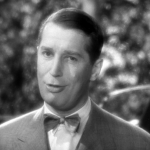 |
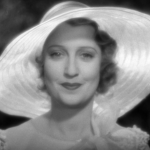 |
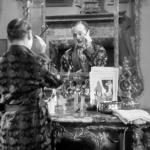 |
| Maurice Maurice Chevalier |
Princess Jeanette Jeanette MacDonald |
Viscount Gilbert de Varèze Charles Ruggles |
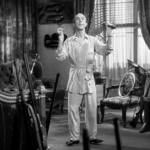 |
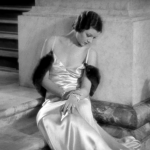 |
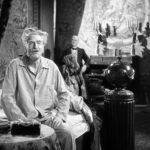 |
| Count de Savignac Charles Butterworth |
Countess Valentine Myrna Loy |
Duke d’Artelines C. Aubrey Smith |
| Released by Paramount | Directed By Rouben Mamoulian |
||
Proof That It’s Pre-Code
- Oh, jeez. There’re so many double entendres in the movie that I lost count after the first few minutes.
- I think the only time marriage is ever really mentioned is when someone is sleeping with someone other than their husband.
- Wet blanket of a lover Count de Savignac climbs a ladder to woo Jeanette only to fall off. He reports, sadly, “I fell flat on my flute!”
- “You impertinent jack–”
“Jack all!”
“Jackass!”
“… Jackanape!”
- Myrna Loy is completely man hungry in the film. When asked if she ever stops thinking about men, she confesses that she sometimes thinks about schoolboys.
- There was a lot of stuff removed from this upon both initial and re-release. More on that below.
Love Me Tonight: Isn’t it romantic?
“Do you live around here?”
“Sometimes I wonder.”
Love Me Tonight is a treat. Set to a number of boisterous Richard Rodgers and Lorenz Hart songs, the movie takes the musical genre to a new height, deftly combining a host of fairy tales into one of the most endearing and technically dazzling films of the early sound era.
Maurice Chevalier plays Maurice, a carefree Parisian tailor with plenty of women and a new business. He crafts a large order of suits for the bon vivant Viscount Gilbert de Varèze (Ruggles), but the Viscount is part of the stuffy nobility and can’t shake any money that he owes Maurice out of his uncle, the Duke d’Artelines (Smith). Maurice must travel to the Duke’s estate to get the money back, impersonating a nobleman to do so. At the estate Maurice also meets the Duke’s sexually voracious niece Valentine (Loy) and one other resident in particular– Jeanette MacDonald playing Princess Jeanette.
The thin plot line belies the complexity underneath as director Rouben Mamoulian (Dr. Jekyll and Mr. Hyde, Queen Christina) — who called this his favorite among his films– seeks to take the toolkit that Ernest Lubitsch had established as the early epitome of the musical genre and push it in several wild directions at once. More on Lubitsch in a bit.
An integrated musical (AKA ones where the songs fit in with the plot), Mamoulian kicks off the picture with the sights and sounds of Paris waking up. It’s a cute way to begin the movie, and properly sets up a fantastical view of the city. It takes the reality we know and lobs it into the surreal. We follow this by being introduced to Maurice, the jovial spirit of Paris, who, besides having trouble keeping his lovers straight, sings about his desire for a nice housewife to scrub his floors and, when he’s showering, his back. The dialogue in the movie flickers between spoken words, rhyming, and song, like the characters can’t hold back when the feeling strikes them.
Chevalier’s singsong wishes for an ideal woman transforms into the rather well-remembered standard, “Isn’t it Romantic?” which unravels into a wonderful 10-minute sequence as the song follows his customer out of the shop and across Paris by way of men humming, singing, and crafting the song. In one of the most metatextual moments of the movie, we feature a songwriter composing his own lyrics for “Isn’t It Romantic?” on a train as he sings along, a peek into the creative process and the romance of creativity. The song also infects a group of soldiers who sing it as they march through the countryside. There, a gypsy boy picks it up and plays it on the violin for the rest of his troupe, who soon give it their own sense of flair.
The complexity of the sequence matches the earlier scenes of the sounds filtering the early morning in the city, but further extrapolates the mood of the movie, giving each character a chance to declare and embody their own take on it– the taxi driver’s idea of romance is seeing the town pass by his windows, the songwriter’s idea of romance is creating a song, the soldier’s turn it into a march and devotional to their vocation, while the gypsy boy imbues it with his own sense of longing and desire, wordlessly. That melody wafts to Princess Jeanette, who uses the moment to wax on her desire for someone courageous and interesting to come along.
The movie becomes a more conventional romantic comedy after these bits, but they really are fantastic, and give the movie a sense of whimsy and joy that any film would have a hard time following. There are still several sequences from Maurice’s charade among the rich that stand out, such as when he wards off a hunting party by hiding a deer in a house and telling them that he’s sleeping, so go away. It underlines how Maurice’s character shakes the stuffiness out of the nobility, and, in particular, the carefully groomed Jeanette.
Luckily, Love Me Tonight is stocked with a great deal of comedic talent, including Charlie Ruggles, Charles Butterworth, C. Aubrey Smith, and Myrna Loy. Loy, especially, gets the best lines as she often struggles to stay awake in the stuffy estate because there are no men around– and, dammit, she just needs ’em.
The movie, instilling another touch of fantasy, includes three cackling aunts played by Elizabeth Patterson, Ethel Griffies, and Blanche Friderici, who serve not just as part time narrators but as antagonists, first crafting a potion to bring Jeanette a lover and then spreading the horrific news when Maurice’s true identity is revealed, gasping in horror. They still provide the happy epilogue, though, giving the movie its final nod to the fairy tales of old.
Mamoulian vs Lubitsch
Of course, comparisons to Lubitsch are guaranteed with the picture, which shares two of his most well-remembered 30s stars, his cinematographer, and the expansive Paramount backlot. In fact, this makes Love Me Tonight an interesting crash course in studio-era auterism, especially when you compare the film to Lubitsch’s own 1932 integrated musical starring Chevalier, MacDonald, and Ruggles, One Hour With You.
Both directors are master visual storytellers, but the differences between them are fun to explore, especially since this film is so outside of Mamoulian’s usual wheelhouse. What Mamoulian does over Lubitsch is to explore and use space. While One Hour With You certainly gets mileage out of Paris, Mamoulian is clearly pushing the scale. Love Me Tonight takes on the entirety of France, both in class and in size. Let’s take the latter first, which stretches the movie from the crowded streets of Paris to a remote castle and the distance between. Mamoulian devotes time to a lengthy scene of Chevalier exploring the large empty castle early on, giving us an appropriate sense of the difference between the streets of the capitol and the desolate chambers of the stuffy nobility. It’s class differences not just in snooty dialogue, but in marked visual significance.
Speaking of visuals, Mamoulian definitely pulls out every trick he can thank of for the film. There are zooms, slow motion, and extended first person sequences which give the film a stunning feeling of visual complexity. Mamoulian was given total control over the film as he made it, and he made the best of it, leaving him unafraid to play with time and space to fit the mood of the picture.
The other interesting difference between the two approaches has to be Lubitsch’s ideas of love and sex against how Mamoulian portrays romance. Before you chime in to say, “but romance and love are the same things!”, no, they aren’t. Love can be passionate, spontaneous, spur of the moment, or even a deep feeling of affection, one nurtured and tended to for years like a garden. Romance, however, teases at the possibility of the unknown. “The romance of flying” and “the love of flying” are two different things– the former indicating a pursuit that captures the heart and imagination, while the latter is a deep, passionate enthusiasm.
Love Me Tonight is inherently romantic, which I think I could get away with saying even if the fabulous “Isn’t It Romantic?” sequence weren’t immediately in the forefront of any discussion about the movie. Compare Lubitsch’s romantic comedies, like Trouble in Paradise or Monte Carlo, and you can see the difference. His films try to articulate lust, to define that moment of satisfaction both sexually in his characters and intellectually for his audience where their situations and desires intersect. While Loy and Ruggles both play sex hungry characters and MacDonald is recommended “excessive, exercise and exercise”, sex isn’t the center of the world here as it is for Lubitsch. Sex is a bonus– being fulfilled emotionally in another person is the real treat here.
I don’t think one is better than the other, just something that fascinated me. I still prefer Lubitsch’s teasing playfulness, but both this picture and Lubitsch’s many masterpieces remain solid pillars in showing why Paramount’s output in the early 1930s was so controversial– and so amazing.
A Celebration of Musicals (To That Point)
Love Me Tonight is remarkably self-referential, almost as if Mamoulian looked back at The Love Parade and simply wanted to rearrange it to his liking. Taking the images that Chevalier and MacDonald had cultivated in a few short years, he delights in tweaking the audience with their knowledge of the stars and their formula periodically. From the first appearance of Chevalier’s iconic straw hat on the silhouette in his apartment to the characters’ identical names, he’s building something that’s a treat for both casual viewers as well as anyone who knew the history that he was drawing upon.
One favorite sequence arrives early on when Maurice and Jeanette meet face to face for the first time. She’s singing a rather suggestive song to herself when her horse drawn coach turns over. He helps her out while his driver takes care of the horse, and Chevalier sings to her the playfully suggestive “Mimi”. She’s fine with it until she figures out just what the lyrics mean, and then Jeanette takes off in a huff. In the process, she runs over Chevalier’s hat. His driver laughs at Maurice, and turns to him:
“What will you do without that your straw hat, Maurice? And where’s that smile of yours? No straw hat, no smile– it’s all over, Maurice! You can’t go on!”
Maurice throws the hat away and runs back to the car. Digging through the suitcases, he pulls out one, opens it and puts on its contents– another straw hat. “Now we can go on!”
Knowing how iconic that hat is to Chevalier’s movie persona (look at any of his film posters from the time) and it’s a nice tweak at the audience, as we may be thinking the same thing as the driver. But, no, there’s always a backup. Nothing’s stopped Maurice Chevalier before, and nothing will this time, either.
Mamoulian looked at what Lubitsch did with The Love Parade and his follow ups and sought to deconstruct what made them work so well as opposed to the countless stagy musicals that had been churned out in 1930 before the big musical bust. He has fun with this, assuring the audience that he knows what they love and delivering more of it to them, just with a twist.
Spoilers.
But my favorite touch on the movie has to be its finale, with MacDonald realizing that passion means more to her than her place among the uptight nobility. She chases after Maurice’s train on horseback and begs him to come back. He declines, saying the social distance is too much. She begs the conductor to stop, but he won’t. So she finally does the only thing that a woman can do– she pulls ahead of the train and stands on the tracks in front of the thundering locomotive.
It’s a badass moment, and it finally sells MacDonald’s transformation from crusty princess to a modern, vibrant woman. She proves to Maurice that she’s not to be taken lightly and more– she’s not the woman who will cook and clean and scrub for him, but a partner of equal imagination and excitement. And Jeanette no longer needs a knight in shining armor but a husband who will give her romance… and that exercise that she needs.
End spoilers.
Love Me Tonight is a treat for classic movie fans, a fantasy that is romantic enough for the film lover while being technical enough for the nerds among us. But most of all, it’s a refreshing bit of early 30s optimism, a glimpse into an era between the wars where nobility still seemed noble and a throwback to the pre-Depression faith where life’s possibilities seemed endless. And it’s all there in smile and songs, forever.
Gallery
Hover over for controls.
Trivia & Links
- Originally ran 104 minutes but was trimmed down to 96 minutes for reissue under the PCA, which is the version we currently have. Apparently it was refused a reissue in 1937, but the eight trimmed minutes made it okay in 1949. Cut footage includes Myrna Loy’s verse in “Mimi” where her nightie was apparently ‘see through’, a song “A Woman Needs Something Like That”, and all references to ‘the virgin springs’. I think we can all picture those jokes in our heads quite well. According to the AFI, on its original release:
The film was rejected in Czechoslovakia, approved without eliminations in Quebec, New York and Kansas, and approved with eliminations in Australia, Britain, Chicago, Ontario, British Columbia, Ohio, Alberta, Pennsylvania and Massachusetts.
- Another weird bit of interest from AFI:
Concern that French Royalists might take offense to the film prompted the Hays Office to give a copy of the script to the Los Angeles French consul, Henri Didot. Based on Didot’s comments, it was determined that only the scene in which the princess strikes a servant should be deleted. In addition, Didot maintained that as long as the duke and princess were not implied to have royal blood, the film should not give offense.
- The third of four pairings between Jeanette MacDonald and Maurice Chevalier, the other three being under the direction of Ernst Lubitsch: The Love Parade (1929), One Hour With You (1932) and The Merry Widow (1934).
- The DVD commentary track by Miles Kreuger is fantastic. Kreuger was a personal friend of Mamoulian’s, and takes a lot of his information directly from papers that he was given in regards to the film. If you have the DVD, it’s a must-listen.
It has taken fully 20 minutes for Mamoulian and his screenwriters to introduce all his principals, and establish that Love Me Tonight is, as its title implies, a veritable lexicon on all the variations of romance. To Maurice, a woman is a potential cook, a housemaid, masseurs, an object to be used as his mood takes him. And perhaps, eventually, a mother to his children. To Jeanette, love comes in the form of an illusory knight in shining armor. To Gilbert, Charlie Ruggles, romance is a night on the town in Paris. For the count, Charles Butterworth, it is the hopeless task of pursuing the princess. To Valentine, Myrna Loy, it is a man, any man, or, as we soon learn, even a schoolboy will suffice. For the three maiden aunts, there is no romance, only love for their neice, the princess. And for the Duke, romance is a good game of bridge, morning, noon, or night.
- For anyone who watched the sequence where Chevalier recites the story of the Apaches with bewilderment, the Apaches were a subculture of violent Parisian thugs who were known for being not too nice. Read more about them at Wikipedia.
- Apparently Myrna Loy’s few lines in “The Son of a Gun is a Tailor” is the only time she ever sang on screen.
- Good movie, bad DVD transfer says DVD Beaver. I agree– it’s pretty fuzzy looking for a DVD.
- DVD Talk says, whatever, the DVD has great extras, so there.
- The New York Times adores it, noting the audience’s reaction:
There are episodes in this production that merited applause and the only reason the audience failed to clap their hands was because they evidently thought they might miss a few words of dialogue or one of the melodious bits of music.
- Slate, in their review of the DVD, has this wry finish:
Love Me Tonight still stands as a definitive musical because, aside from the filmmaking wonders Mamoulian conjured, it conveys one universal truth to the musical genre: that there’s no better motivation for breaking out into song than to express sexual satisfaction.
- Senses of Cinema calls this “the Mamoulian film that Mamoulian actually did pull off” and talks about the film’s class conscience:
Formally adventurous and frothily naughty-and-nice, Love Me Tonight can also boast, at the base of its whipped-cream dish of Ruritanian escapism, an almost brazen class-consciousness. For all his princely charms, Maurice raffishly embodies an imitative petit bourgeois, forced to confront a hidebound elite. For all her princessy graces, Jeanette must see beyond station and propriety and connect with the real urges of the real woman underneath all the deluxe froufrou. At one point Maurice remarks to her “You know too much about hunting, etiquette, tradition. You know nothing about style, charm, love.” Admittedly a compromised, romanticised denunciation of social strictures but a put-down, nonetheless. As if to suggest a darker, more dangerous side to our beaming working-class hero, Maurice’s enactment at the fancy-dress ball of “The Poor Apache” routine touches on illegitimacy, poverty, petty crime, domestic violence and finally that most brutally efficient disposer of the dispossessed, the guillotine!
- TCMDB has toooooons on this one. Here’s how the film came to be made:
Paramount Pictures President Adolph Zukor had just survived a major corporate purge triggered by the studio’s declining box office in the early years of the Depression. One financial problem he had to deal with was the inactivity of two of his biggest stars, Maurice Chevalier and Jeanette MacDonald, who were drawing large salaries ($10,000 a week for the former; $5,000 for the latter) with no film assignments planned for either. The team’s usual director, Ernst Lubitsch, was in the midst of contract negotiations and playing hard to get. Desperate to put the stars to work, he turned to Rouben Mamoulian, a stage director who had scored at the studio with the innovative sound films Applause (1929) and Dr. Jekyll and Mr. Hyde (1931). Although exhausted from his work on the latter film, Mamoulian couldn’t resist Zukor’s offer of a free hand in choosing and shooting the picture.
Playwright Leopold Marchand suggested that a piece he had written with Paul Armont, Le Tailleur au Chateau, might provide Mamoulian with the perfect plot for his musical. The director agreed that the tale of a tailor passing as nobility would have just the kind of fairy tale quality he was looking for, a reverse-gender Cinderella story. Mamoulian then chose one of Broadway’s top songwriting duos, Richard Rodgers and Lorenz Hart, to write the score. In a rare move for a film or stage musical, he had them write the songs first, making sure that each lyric related closely to plot and character. He also had Hart write rhymed dialog for some scenes. Only then did he put the screenwriters to work. The result, Love Me Tonight, was a peerless integration of script and score, perfectly fitting the director’s concept of the film as an illustrated musical score. […]
Mamoulian spent so much time writing and re-writing the script of Love Me Tonight that the start date was pushed back several times. As a result, Paramount had to pay off theatres that had engaged Chevalier to perform during what would become the shooting period. That helped drive the budget close to $1 million.
- TCMDB again, on Myrna Loy’s role:
Mamoulian arranged to borrow Myrna Loy, whom he had dated on occasion, from MGM for the role of Countess Valentine, MacDonald’s man-crazy cousin, because he thought she had a knack for high comedy. At the time, she was primarily cast as Asian temptresses, but two years later she would live up to his expectations when she starred as Nora Charles opposite William Powell in the screwball comedy-mystery, The Thin Man (1934). […]
Paramount executives thought Myrna Loy’s character, Countess Valentine, superfluous and tried to make him cut her from the script. Instead, he sent out official scripts in which she had no lines, then privately sent Myrna Loy her scenes. When she started turning up in rushes, the executives were so happy with her performance, they stopped trying to eliminate the role.
- NYU’s Film Notes from 1962 are pretty interesting both as a relic of how the movie was received when shown on broadcast TV as well as their general impressions on the filmmaking:
Visually, the film is enchanting. Every aspect of photographic grammar is superbly utilised: split-screen, slow dissolves, slow motion, satiric images combined with exaggerated sound effects; elaborate dollies and dissolves, matching models with the real thing to perfection; and a climax which, apart from its sheer virtuosity and exhuberance, also gently kids the editing patterns and dramatic images of the Russian classics. Mamoulian’s celebrated shadow work is present, though not emphasized this time, and it is used for satire and gentle rather than dramatic effect — as in the shots of the three sisters, happy combination of the witches from “Macbeth” and assorted fairy godmothers from “Cinderella”.
- Though not the trailer, someone has helpfully uploaded the entire “Isn’t It Romantic?” sequence. Bon apetit:
Awards, Accolades & Availability
- This film is available on Amazon.
Comment below or join our email subscription list on the sidebar! |
||
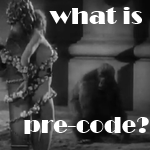 |
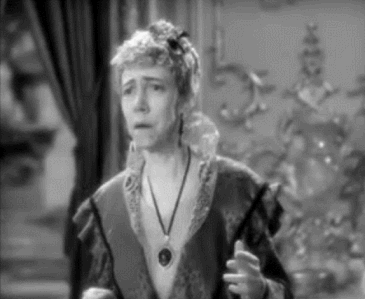 |
 |
 |
 |
|

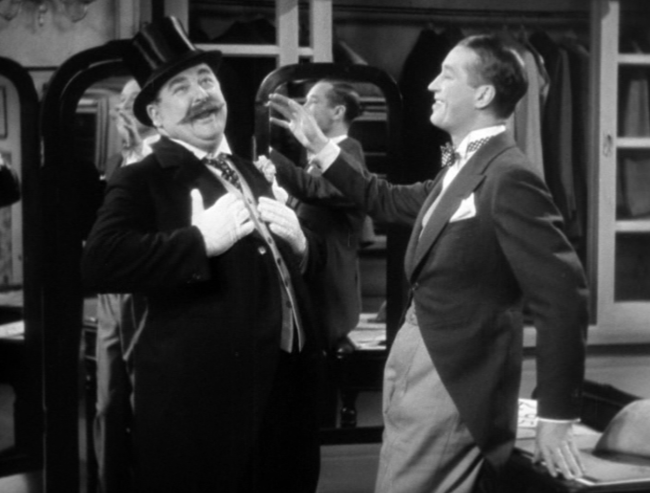
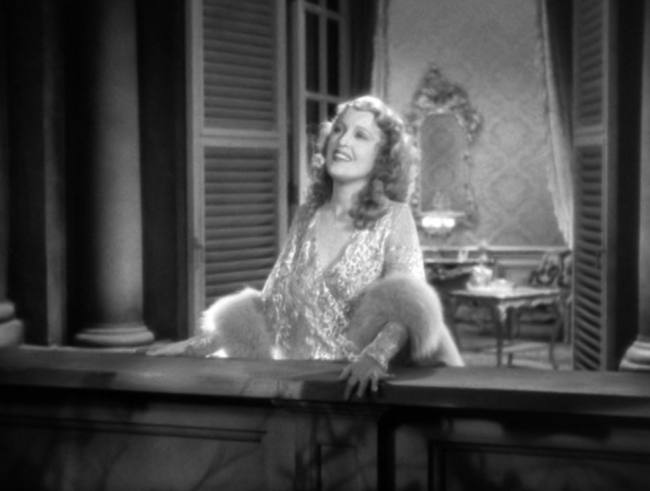
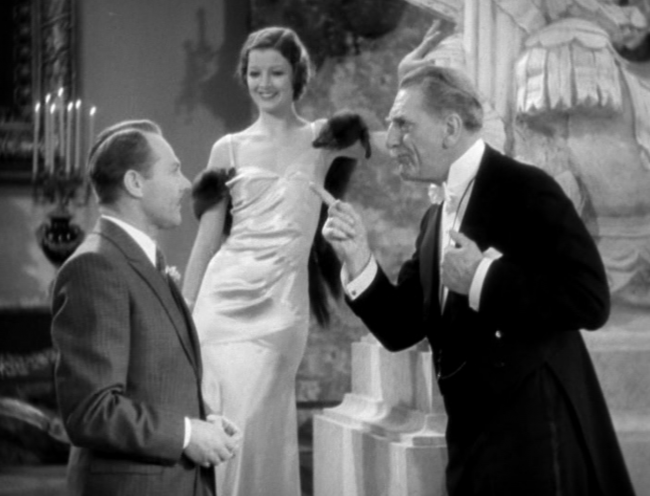
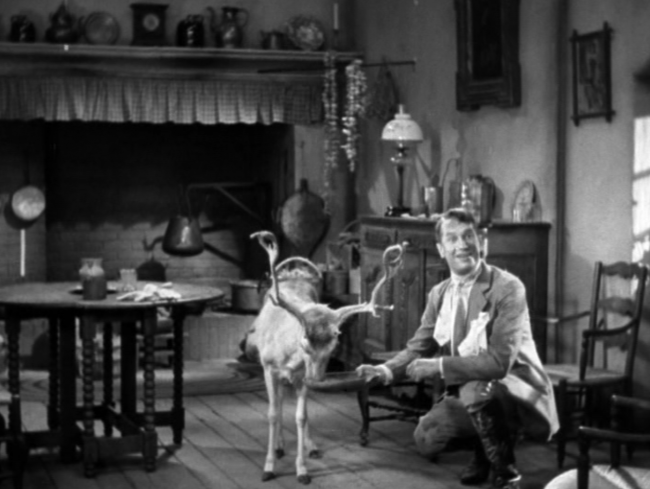
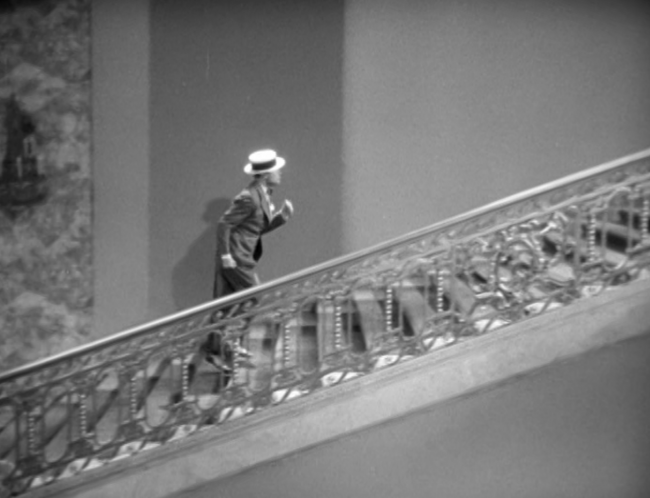
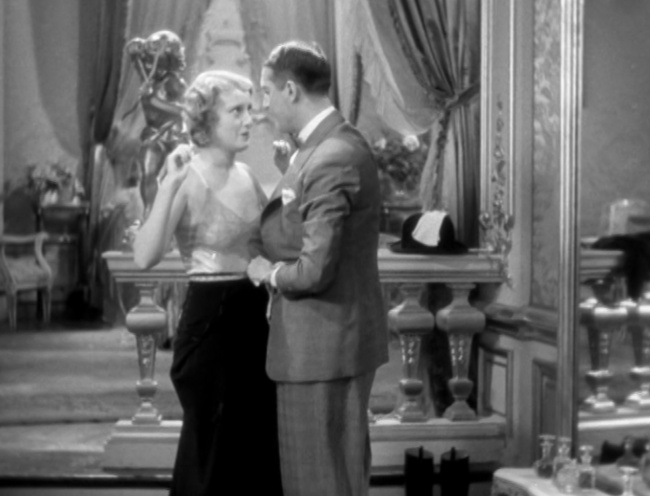
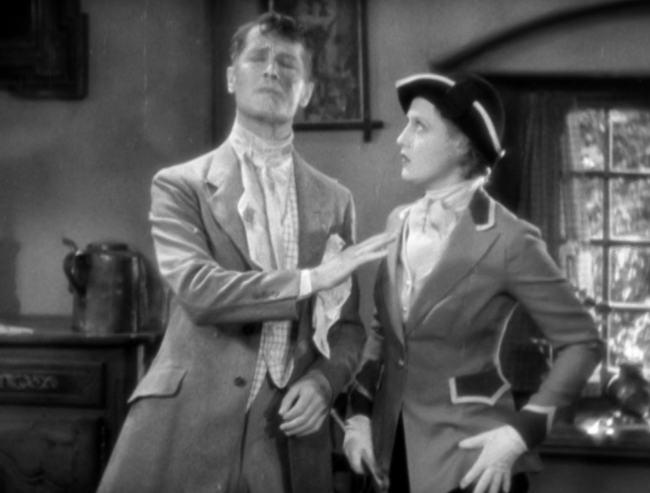
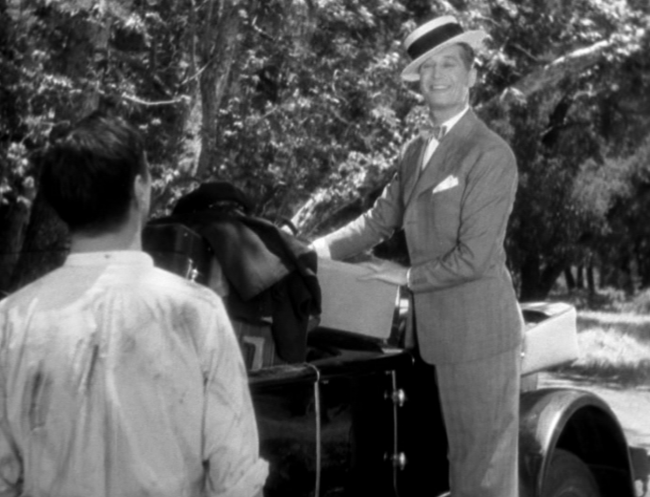
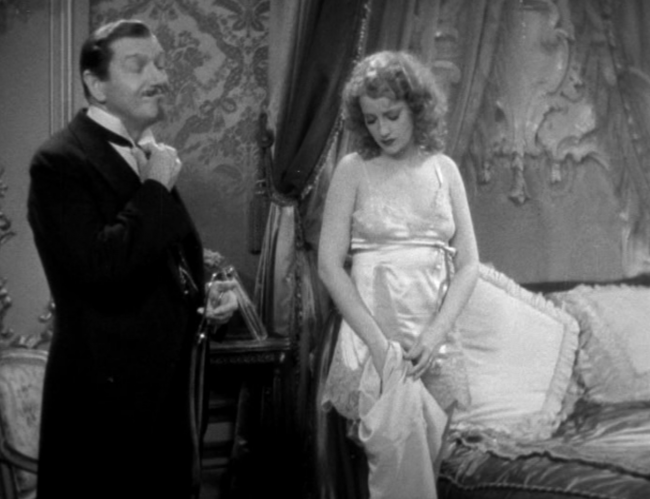
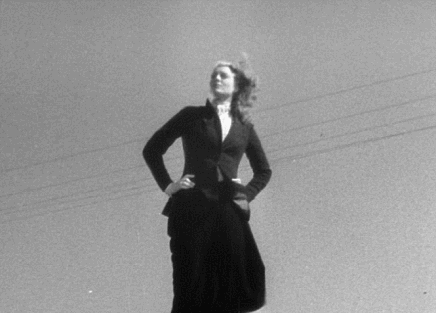
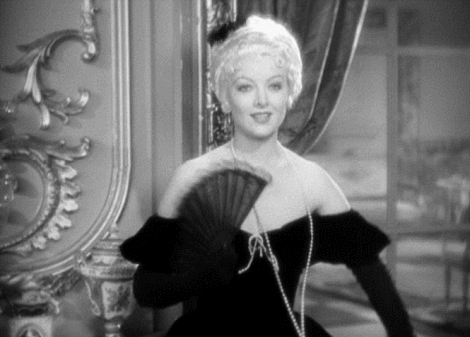

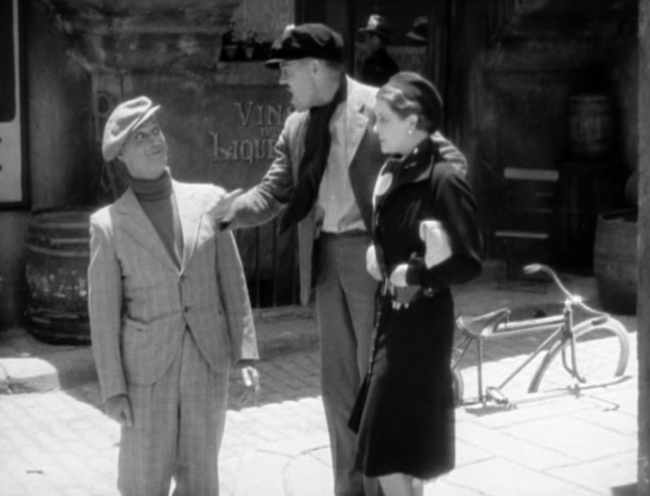
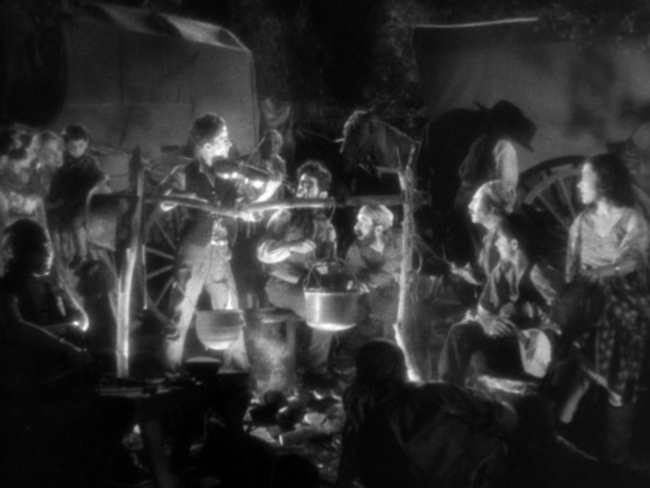
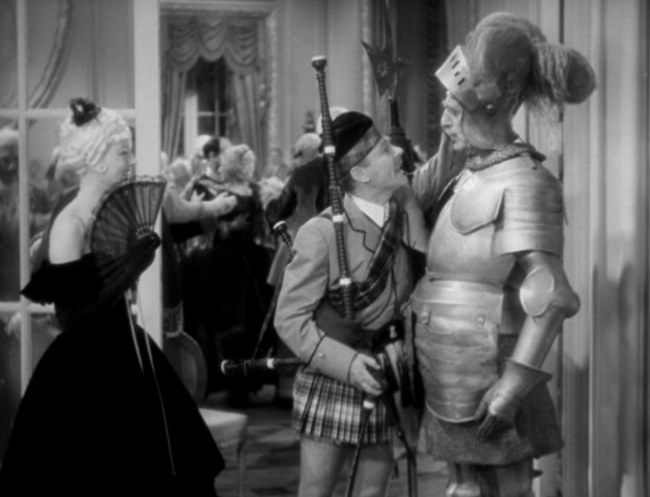
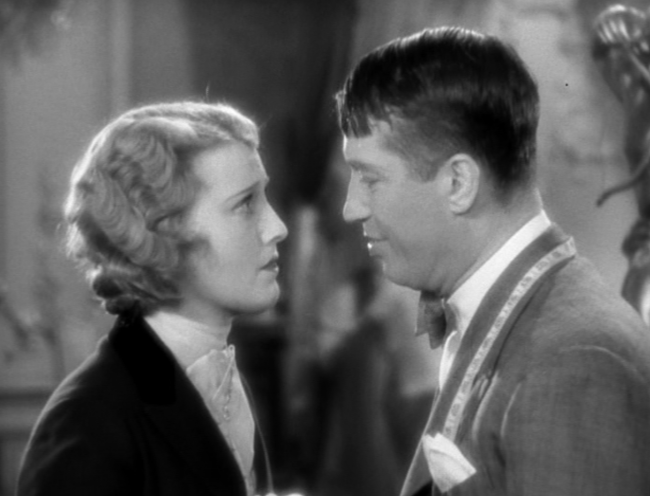
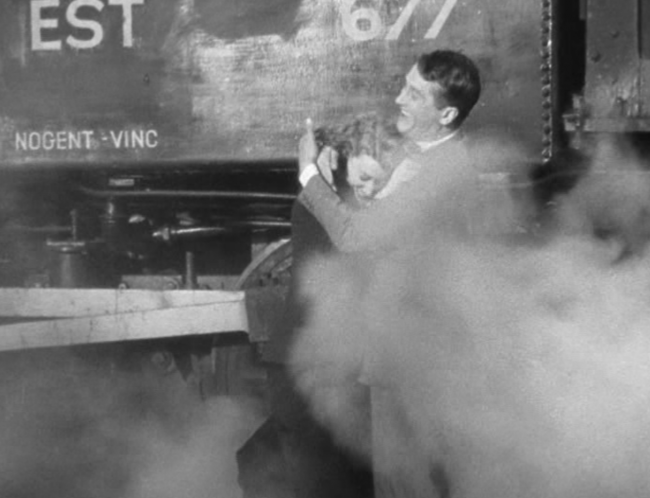



20 Comments
Alan Douglas · June 29, 2015 at 1:17 am
Love Me Tonight never loses it’s charm and wit.It’s as fresh today as any trip into the woods.. It will still be appreciated and enjoyed by generations to come.
Danny · July 2, 2015 at 10:08 am
Here’s hoping!
Lesley · June 29, 2015 at 1:19 am
Great post, Danny, on a movie that really deserves the space. I enjoyed your comparisons of Lubitsch and Mamoulian and the fact that you didn’t make one of those “but X is better” comments I so often see in relation to this movie. Who needs partisans? Why can’t we just exult in all this pleasure from both of them?
I’ve read a couple of times that Lubitsch said that, between real Paris and Paramount’s Paris, he preferred Paramount’s. It’s a wonderful backlot, isn’t it?
The opening with the sounds Mamoulian borrowed from himself: He used it in the Broadway production of Porgy (the play later adapted by Gershwin). Mamoulian fascinates me—he’s one of those I would love to have cocktails with. What a dizzying mind! Especially when you consider that movies were distinctly his part-time gig, he was much more a New York theater guy. His technical innovations and playfulness, his kidding of stars’ personas and Russian editing… the three old ladies parodying the Macbeth witches… it’s so rich.
Anyway, wonderful writeup, thanks! Maybe I’ll listen to the commentary this afternoon…
Danny · July 2, 2015 at 10:16 am
The backlot ideal of Paris is so wonderful, I can only imagine being let down by the real thing whenever I finally get to visit it. (Oh, to look forward to being disappointed!)
And I couldn’t pick between Mamoulian and Lubitsch if I wanted to. I think it’s interesting to see Mamoulian play with Lubitsch’s toys, and while I wish Lubitsch had returned the favor (I don’t know *how*, mind you– maybe a horror movie with Fredric March?), Love Me Tonight just becomes an interesting little celebration of everything that had come before.
And, yes, I would kill to have cocktails with Mamoulian too. Thanks for coming by!
Vienna · June 29, 2015 at 4:56 am
Great review. So much detail about the film. Thank you so much.
It’s a sheer delight.
Dulcy · June 29, 2015 at 6:06 am
A digression re: Mamoulian Another charmer, for me at least, is The Gay Desperado. Of course, I’ll applaud anything with Harold Huber in it, but there is wit, charm and humor in abundance here, despite some opinions that it is too weird, strange, and politically insensitive (huh? it’s a MOVIE) And I do love Love Me tonight, too!
Danny · July 2, 2015 at 10:18 am
I’ll definitely track that one down. Thanks for the rec, Dulcy!
shadowsandsatin · June 30, 2015 at 1:27 am
Great stuff, as always, Danny. I’m pretty sure (or maybe it’s just wishful thinking now that I’ve read your review) that I have this movie in my collection. I tend to automatically dismiss any movie with music, but I can’t deny how much I enjoyed The Smiling Lieutenant at the TCMFF, so I’m trying to be more open-minded now. Your write up on Love Me Tonight helps a lot.
Danny · July 2, 2015 at 10:19 am
The early 30s was dire for musicals, but I think a number of Paramount productions, especially Lubitsch’s and this one, really nail how to do things before Berkeley showed up and really swept the rug out from everyone. I hope you do have it, Karen, and you watch it again!
Lawrence Chadbourne · June 30, 2015 at 10:27 am
A really thorough write up. You’ve convinced me to sign up for your blog.
Danny · July 2, 2015 at 10:20 am
Thanks for the kind words!
Peter Hyatt · June 30, 2015 at 9:02 pm
Thank you for a detailed review. You’ve made me want to see it and will keep an eye on TCM for its showing.
Danny · July 2, 2015 at 10:24 am
I hope you do check it out, it’s a treat. If you’re interested in seeing a bit more for yourself now, there’s an ugly looking, mangled version (that’s missing ~10 minutes of audio) of Love Me Tonight over on YouTube. It’ll at least let you know if you if the DVD is worth getting. (Which I think it is!)
Judy · July 1, 2015 at 5:23 am
I love this one – great write-up and a lot of interesting background information. Maurice Chevalier and Jeanette MacDonald make a wonderful combination.
Danny · July 2, 2015 at 10:25 am
I agree! Thanks for coming by, Judy. 🙂
Xxxxx · July 2, 2015 at 8:41 am
Cite your sources
Danny · July 2, 2015 at 10:02 am
All of my sources are in the Trivia and Links section. And if you think I plagiarized something, I’d love to know what it is.
TheTommyYaya · July 29, 2015 at 5:50 am
Great review, Danny! You’ve done a boatload more digging on this than I’d have even thought of – good for you! I’m pleased that you’ve now seen and enjoyed this, a favorite of mine.
Danny · August 16, 2015 at 12:47 pm
Glad you enjoyed it. Love Me Tonight definitely grew on me, and it’s a sweet little movie.
Dan Cowan · December 10, 2016 at 10:47 am
Loy arrived on set for a ballroom scene in a gown MacDonald decided was too glamorous and demanded for herself. Myrna returned on set in the only black gown on set (as pictured above), thus still stealing the scene. How many movies are there where the comic relief is more beautiful than the lead?
Comments are closed.